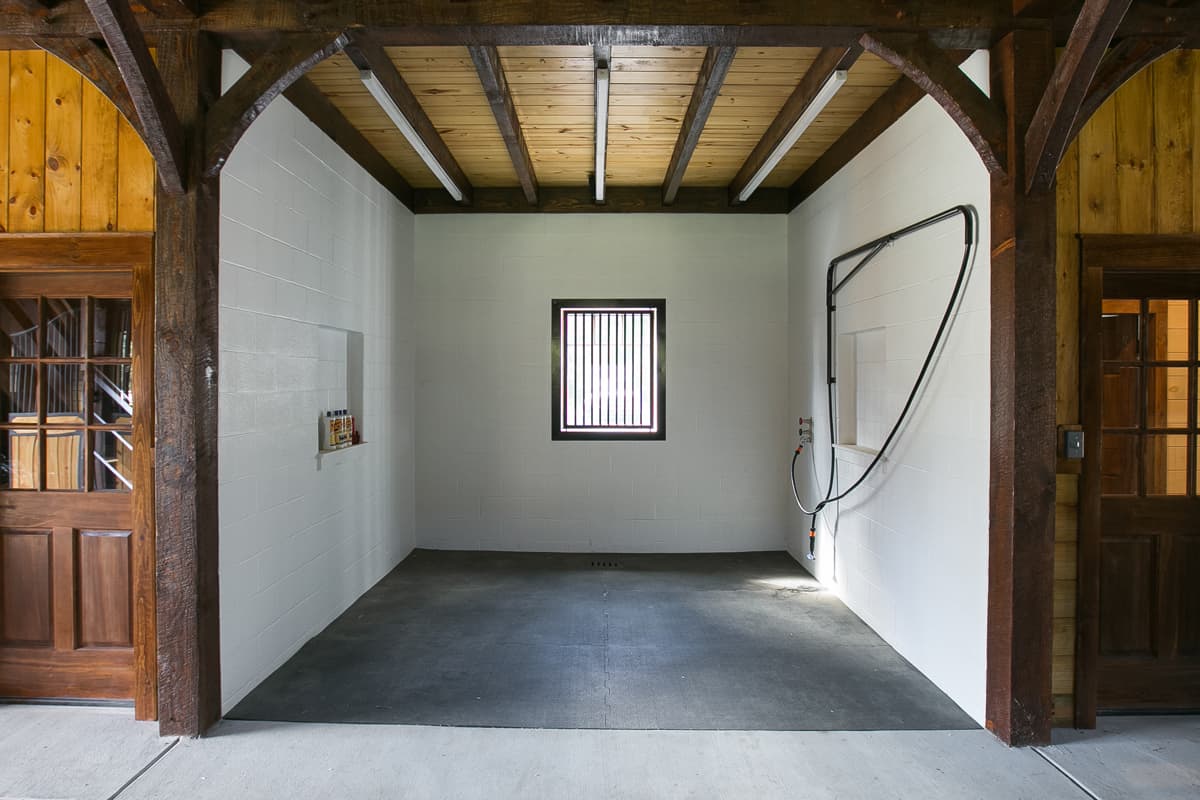No one has to explain the horrific devastation of a barn fire. While no building is completely fireproof, horse owners and barn owners can take some steps to help minimize their risk.
Protecting a horse barn is not the same as protecting your home. Horse barns, stalls, and arenas are filled with highly combustible materials. All that is required to start a devastating fire is a spark from a faulty wire or misplaced lighting. Within two or three minutes, a straw fire can burn an area 10-feet in diameter. This is why half of barn structure fires involve the entire building.
Fortunately, there are some practical and long-term precautions barn owners can take to help prevent fires from even starting. We’ve grouped some of these tactics together, focusing on four key areas of ignition sources, flammable or combustible materials, barn construction, and education and drills.
Ignition Sources
According to the National Fire Prevention Association (NFPA), heating equipment is the leading cause of barn fires, causing nearly one-quarter of the recorded fires. Do not use electrical equipment, appliances, or cords that are in poor condition. Motors – such as those used for circulation fans or space heaters – should be more than 18 inches away from any combustible material, such as hay or bedding. Also, ensure any electrical equipment or appliances are prepared for a dusty, moist environment. For example, don’t strap plastic box fans to your stall front for air circulation. Instead, mount an industrial grade dust-proof, water-proof fan on the wall.
Avoid running excessive electrical cords. When using electrical cords, make sure they are kept away from horse or rodent teeth, or horseshoes. In addition, have a qualified electrician inspect any electrical appliances being used, such as water heaters, pipe-heating, and portable heating units.
If you make your own hay, and it’s not 100% dry, make sure you monitor your bales with a temperature probe for at least two weeks in case of overheating. This prevention tactic also applies if you purchase hay that has been recently cut and baled.
Of course, one of the easiest ways to prevent fires in your barn is to ban smoking. Enforce a no smoking policy in the barn, tack room, lounge, or areas near the barn. Keep in mind, if grass or vegetation near the barn is dry, you’ll want to make sure no one smokes there, either.
Flammable or Combustible Materials
Keeping flammable or combustible materials as far from your barn as possible can help prevent sparks from turning into full-blown fires. If possible, store hay, fertilizer, paint, pesticides, fuel, oil, and other combustibles away from the barn. Any materials used with those combustible materials – such as paint brushes, rags, or containers – should also be removed from the barn. If you use equipment or motors in the barn, ensure that they are not leaking oil or idling indoors.
Aside from obvious accelerants, barns and stalls have less obvious combustible materials. The dust in barns is very flammable! Be sure to clean your barn regularly to remove that dust. (Read this article for tips on cleaning your barn.) Make sure your electrical appliances are clear of cobwebs, chaff, dust, or other combustible materials.
Barn Construction
Believe it or not, how your barn is constructed can have a role in fire prevention. One of the reasons B&D Builders prioritizes close partnerships with clients is so that we can hear your concerns regarding every detail, including fire prevention. We also work within the measures required by your township’s building code.
Some of the decisions we will discuss will take place in the design phase. We’ll talk through the number of stalls in your barn, and the number of locations of entrances and exits. Other decisions will come into play during the details of your barn building. For example, we know your barn’s wiring is critical. We would never use Romex wiring: mice will chew through it and start a fire. We’d also recommend dust-proof and water-tight outlets and switches. We can also talk you through extra considerations such as installing heat and smoke detectors and fire alarms, sprinklers, fire doors, or firewalls.
Education and Drills
In addition to steps to prevent fires, horse and barn owners should get educated about what they can do in case of a fire. Have a barn evacuation plan and communicate the plan with everyone who would be affected. Hold practice fire drills so everyone who works in or uses the barn is familiar with their responsibilities if a real fire should start. Make sure everyone knows where the fire extinguishers are, and when it’s ok to use extinguishers or when they should focus on evacuation. Keep a halter and lead shank on each stall door front for easy access in an emergency.
Also, consider inviting the local fire department to your barn. They can inspect your facility and provide ideas of what you can do to improve your fire prevention practices. You should also ask how easy it is for them to locate your property and to access your barn with large trucks. If you don’t have an easily accessed source of water, you might want to discuss how they will truck water in, or whether you should install a water source on your property.
An Ounce of Prevention
Remember the phrase, “An ounce of prevention is worth a pound of cure”? We may never be able to cure the devastation caused by barn fires. But with careful attention to barn cleanliness and construction, coupled with some common-sense fire prevention tactics, we can reduce the risk of a fire in your barn. To incorporate fire prevention and other safety measures in your new barn construction, be sure to talk with a qualified builder such as B&D Builders. You can give us a call at 717-687-0292 or complete our contact form here.
